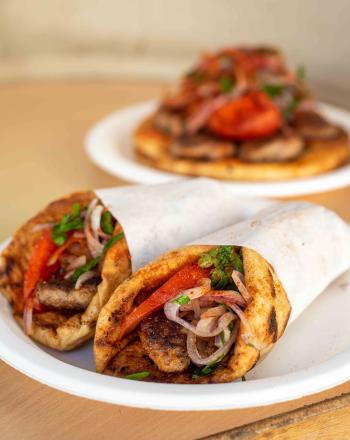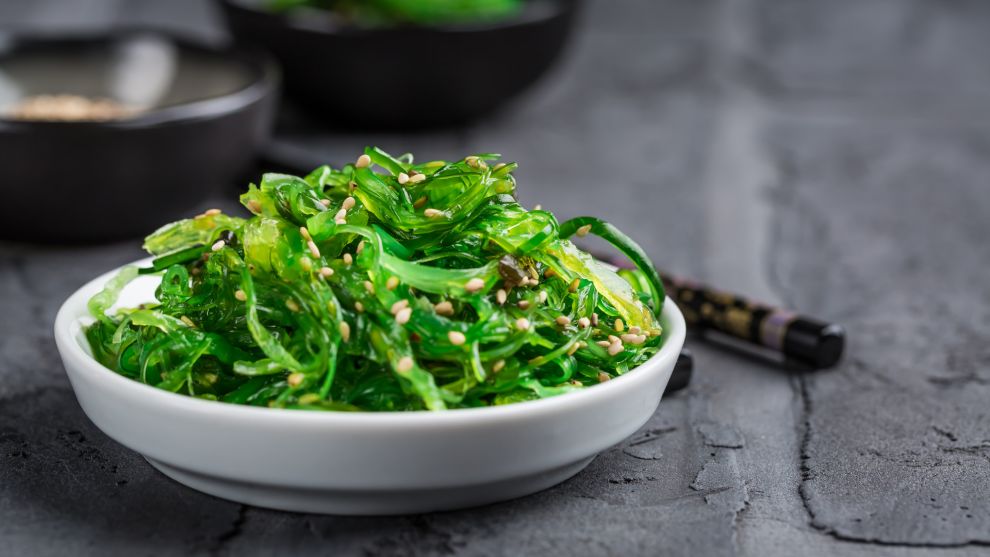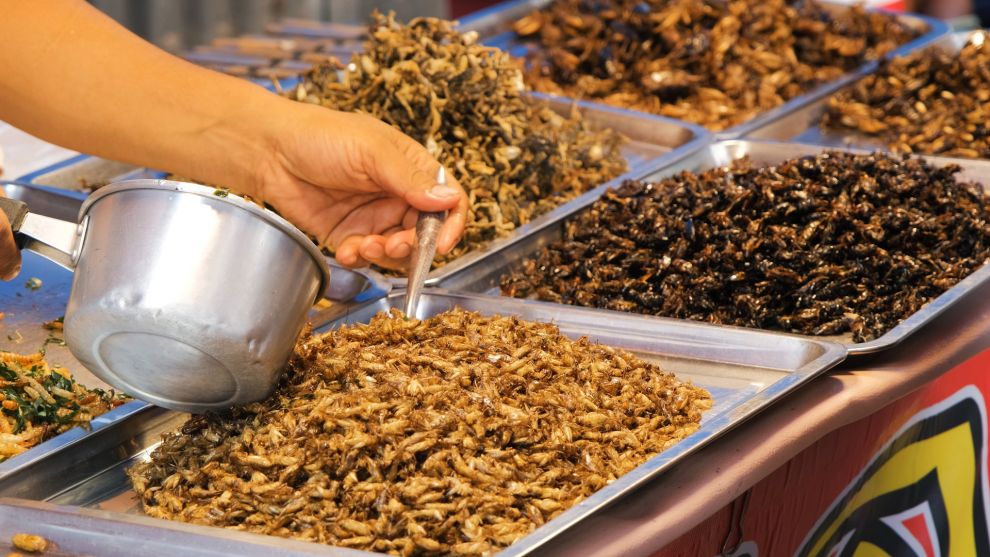
By 2050, the world population is projected to reach 9–10 billion, up from about 7.5 billion in 2017. The Food & Agriculture Organisation of the United Nations estimates that food production will need to increase by 60–70% to meet global demand. However, this comes with environmental consequences: more production leads to higher greenhouse gas emissions, and deforestation releases the carbon stored in trees. Coupled with climate change converting fertile land into deserts, the challenge of food security becomes pressing.
Translation | Amaryllis Tsegou
Why food sufficiency is a problem
Several factors drive the concern:
- Rapid population growth: Increasing demand for calories.
- Climate change: Agriculture uses 40% of the world’s land and contributes 25% of greenhouse gas emissions; it also consumes 70% of global freshwater.
- Dietary habits: Meat and dairy require disproportionately more resources.
- Water scarcity: Producing 1 kg of wheat requires 15,000 liters of water; 1 kg of beef needs 16,000 liters.
These pressures are pushing scientists and entrepreneurs to explore alternative, sustainable food sources.

What will we eat in 2050?
The decline in available resources has led scientists and entrepreneurs to explore innovative alternatives to traditional food sources. What once seemed futuristic is now becoming reality - and some of these ideas have already progressed from the concept stage to real, edible products.
Cell-cultured meat - Meat created in the laboratory
This is a process in which healthy animal cells are extracted and cultivated in a bioreactor, where they grow and are shaped into familiar products such as steaks, burgers, and chicken nuggets. In this way, the taste and nutritional profile of conventional meat are reproduced - without the animal ever being born or slaughtered.
One particularly interesting example is Primeval Foods, a company planning to launch a series of laboratory-grown “exotic meats” with the goal of protecting the planet. Lion burgers, tiger steaks, and zebra sushi rolls are among the products it aims to introduce to the market, according to The Independent (UK).
These products - once tested and approved for nutritional safety - present a unique advantage: they have no direct comparison. Unlike plant-based products that attempt to mimic familiar meats such as chicken or beef, few people have ever tasted a Siberian tiger, black panther, Bengal tiger, or zebra to compare their flavor profiles.
It is therefore a form of meat that doesn’t imitate an existing staple, but rather introduces something entirely new. The company has stated that once its products pass regulatory approval, the first tastings will take place in Michelin-starred restaurants, with plans to later expand into retail.
At the same time, this method of “cultivating” meat is being presented as a strong alternative to conventional animal farming and slaughter, with greenhouse gas emissions shown to be dramatically reduced. Research from the University of Oxford and the University of Amsterdam reports:
“Compared to conventional European meat, cultured meat involves approximately 7–45% lower energy consumption (only poultry consumes less), 78–96% lower greenhouse gas emissions, 99% lower land use, and 82–96% lower water use depending on the comparative product. Despite the high uncertainty, it is concluded that the overall environmental impact of cultured meat production is significantly lower than that of conventionally produced meat.”
Furthermore, this method minimizes the risk of disease outbreaks and eliminates the need for costly vaccinations and antibiotics. However, this does not negate the importance of ongoing research and testing regarding the long-term effects of consuming lab-grown foods.
Plant-based meat alternatives
Perhaps the most widespread and fast-growing category on the list, plant-based products have seen remarkable expansion over the past decade. These are foods that attempt to replicate the taste, texture, and appearance of traditional meats using vegetables and other plant-derived ingredients. Many of these are already available in Greece, though not all.
In recent years, I’ve been invited to taste several such products—especially abroad, through organised tastings. Many are impressive, but if I had to single out one, it would be JUST Egg, a plant-based mix for scrambled eggs.
What’s especially interesting is that the product contains no cholesterol or artificial flavouring. Its main ingredient, the mung bean, has been cultivated for over 4,000 years and requires far fewer resources to grow than a conventional egg.
The company combines great flavour with environmental awareness, stating: “Our eggs are delicious, but they can also help build the planet.”
JUST Egg provides some striking statistics (which may vary by country):
- It takes roughly 200 litres of water to produce one traditional egg, while JUST Egg uses 98% less.
- Although livestock farming produces only 18% of global calories, it occupies over three-quarters of all arable land.
- The company’s products use 83% less land and emit 93% less carbon dioxide.
The mung bean also leads us to the next important category - legumes. With more than 16,000 known species, few are cultivated on a large scale, even though they can play a key role in sustainability. They grow in varied climates, require no nitrogen fertilisers, and even improve soil quality.
Jellyfish
Jellyfish are already consumed in various cultures, particularly in parts of Asia. Of the roughly 2,000 known species, only 11 are safe for human consumption, and they require meticulous cleaning since they retain their venom even after death.
According to American Oceans, regular jellyfish consumption “can help prevent chronic diseases, as many species are rich in protein, antioxidants, selenium, iron, omega-3, and choline.”
Their texture is chewy and naturally salty, and it’s likely we’ll see growing experimentation with jellyfish in pickled form, salads, breaded preparations, and even dried snacks.

Seaweed / Ocean farms
An impressive example in this field is Akua, a company that has helped expand the conversation around sustainable “ocean farming”—the cultivation of algae as a food source. Akua has introduced a burger made from kelp, a form of seaweed that is low in calories but rich in vitamins A and K, as well as minerals such as iodine, iron, folic acid, calcium, magnesium, and zinc.
Beyond its nutritional value, the development of ocean farms contributes to higher oxygen levels and reduced carbon and nitrogen concentrations in the water. Akua also notes that these farms help restore marine biodiversity, with shellfish and other species returning to areas where they had not been seen for decades.
Entomophagy (Insect consumption)
Perhaps the most unfamiliar category for Western audiences, entomophagy—the practice of eating insects—is already part of daily life for nearly 2 billion people, or about 25% of the global population.
More than 2,000 insect species are known to be edible, and according to the Science Museum of Virginia, around 80% of an insect’s body is consumable, compared to only 40% of a cow’s, making insects an efficient protein source.
Since 2013, the Food and Agriculture Organisation of the United Nations has promoted insects as a sustainable and nutritious alternative protein. However, it may still take time before we see fried grasshoppers or cricket flour incorporated into savoury or sweet dishes in Greece and most of Europe.

Conclusions
Undoubtedly, the culinary challenges of the future reflect the environmental challenges facing our planet today. The integration of technology - big data, artificial intelligence, and more - will profoundly shape how we produce and consume food in the coming decades. In all cases, sustainability will play a defining role in how chefs create and innovate around the world.
From an educational perspective, this discussion is particularly fascinating. At La Chef Levi, for example, the curriculum 20 years ago did not include sous-vide cooking, dehydrators, ruby chocolate, gluten- and lactose-free ingredients, or molecular gastronomy - concepts that are now commonplace. It would be fascinating to revisit this discussion in a few decades and examine the dietary landscape of 2050.
Ultimately, whether it’s a perfectly aged cut of meat or a kelp burger, one truth remains unchanged: when a chef creates something delicious, there will always be people eager to try it.




